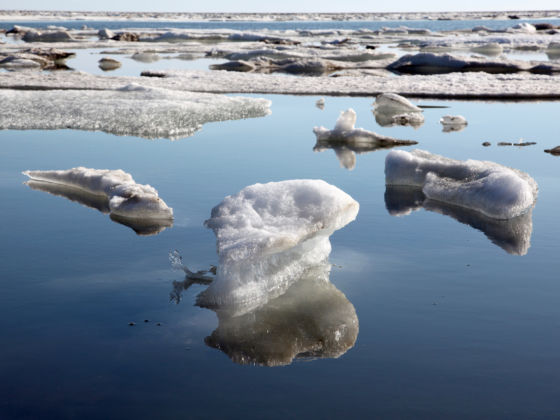Last February, in the dead of what is supposed to be the harshest winter on the planet, the Arctic was much warmer than usual. According to Vox, temperatures recorded at the northernmost weather station in the world were above freezing for 24 hours and peaked a week later at 6.1 degrees Celsius (45 degrees Fahrenheit), before going back to normal. Today, for the second time this year, the temperature in the Arctic climbed to 17-19 degrees Celsius (30-35 Fahrenheit) above normal and at melting point, i.e. 2 degrees Celsius. These so-called “rare” heat waves are actually becoming routine in the Arctic, creating an environment where the sea ice can melt rapidly and steadily.

An Extreme Heat Wave Just Made the Arctic Hit Melting Point
It was the third hottest April on record (after 2016 and 2017), says @CopernicusECMWF. Average temperature for 12-month period from May 2017 to April 2018 was most above average in Arctic and, globally, was 0.47°C warmer than 1981-2010 baseline. #climatechange pic.twitter.com/REFIU6k3pw
— WMO | OMM (@WMO) May 7, 2018
Polar ocean expert Peter Wadhams explained to YaleEnvironment360 that the sea ice works as an air conditioner for the whole planet, so when it disappears, global warming will only be more intense and threaten life on Earth as we know it by creating extreme weather events, making the sea level rise, and by killing marine life on which we depend on for oxygen.
The only way to curb the current melting of the sea ice is to tackle and considerably reduce our greenhouse gas emissions. Without that, we may witness an ice-free Arctic summer by 2020, as some scientists believe, and the rest will be history.
H/T: Washington Post